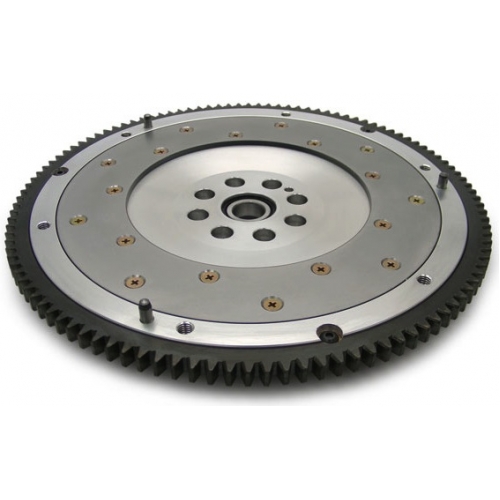How is it possible to drive big gears at low RPMs?
The invention of my choise
My choice was automatic transmission and flywheels. I’m very interested in automatic gearboxes because I have one car with that kind of gearbox. But why flywheel? Because automatic gearbox isn't new invention I thought that I will focus on more flywheels and I chose rather question which relates today. For example VW uses new flywheels (dual mass) in their automatic gearboxes. So I’m interested in about those also and both of relates each other.
To understand how the flywheels work I needed to find out very deep data especially of engine's functionality (what kind of the crankshaft's rotation is), something about clutch and also about transmissions. This article was difficult to analyze because I needed to know both transmissions, automatic and mechanical and other things too to understand why some parts are somewhere else and how they affect to whole car.
So first I'm going to tell about transmissions and where the flywheels and clutches locate and then I go to the question.
Transmissions
Mechanical transmission
Gearboxes needs flywheel and clutch to work. The mechanical transmission's clutch and flywheel are like one packet. The flywheel is after engine and it's almost connected to clutch (brown line in the picture) and then is pressure plate and after that the mechanical gearbox.
Automatic transmission
In automatic transmission flywheel is between engine and torque converter. There isn't that kind of clutch than the mechanical transmission's clutch. The torque converter is like clutch and some of the automatic gearboxes have many clutches but those are totally different than the basic clutch. They consist of many friction plates. There are many different looking automatic transmissions in markets (different brands have different boxes).
Flywheels
What is flywheel and why it’s used?
Flywheel is needed because engine doesn't run smoothly, it’s like jerking. For example four cylinder engine’s crankshaft got sharp spin kick in every half turn intervals. The old way to even out that is to use heavy flywheel. Flywheels functionality is based on that the wheel gets kinetic energy which caused by engine. The flywheel’s motion keeps the crankshaft’s rotation smoothly.
---
If we think about that the radius of the flywheel is almost constant it is like solid (flat) cylinder. Crankshaft is the external force which accelerates the flywheel. So it's external impulse which changes the flywheel's momentum.
Flywheel's moment of inertia (Solid cylinder):
J=½mv^2
Torque/impulse moment of the crankshaft:
,
The crankshaft changes the flywheel¨s momentum with the following equation:
Ft =mv
And it changes also the
Mt = J
The heavier the flywheel is the bigger is its moment of inertia so it takes more time to change its rotational motion and it takes time to accelerate it but heavier flywheel keeps longer the rotation than lighter wheel. Because lighter flywheel accelerates more quickly the engine gets more quickly high RPMs. So very important factor is the mass of flywheel.
The flywheel's
When you start your car’s engine, the starter motor (electric motor) spins the flywheel which then spins the crankshaft so the pistons move up and down and then if there isn't any problems in ignition and the fuel-air mix input, the engine starts to run “itself”.
What is dual mass flywheel why it’s used?
Dual mass flywheel is used for example in VW’s DSG automatic gearboxes. It consist of two parts (two flywheels) which are connected together with a spring or springs. That two parts structure’s and the spring’s purpose is to smooth more effectively (than basic flywheel) the torsional vibrations which are caused by the crankshaft. The dual mass is flexible and the basic flywheel isn’t so the dual mass attenuate much better the vibrations.
Because of that dual mass enable the driving with big gears at low RPMs. It’s profitable when we look at the fuel consuming, but because the dual mass is very exposed to vibrations and they aren’t yet so advanced, they can’t stand many years the vibrations.The fixing of dual mass is very expensive.
Almost everyone know when you drive with basic manual car (with basic flywheel) with big gears at low RPMs the car starts to jerk. It’s due to that any parts of the car don’t yield in other words are not flexible like the dual mass flywheel.
Picture1. http://www.aptuned.com/image/cache/data/fidanza/fidanza-flywheel-500x500.jpg



